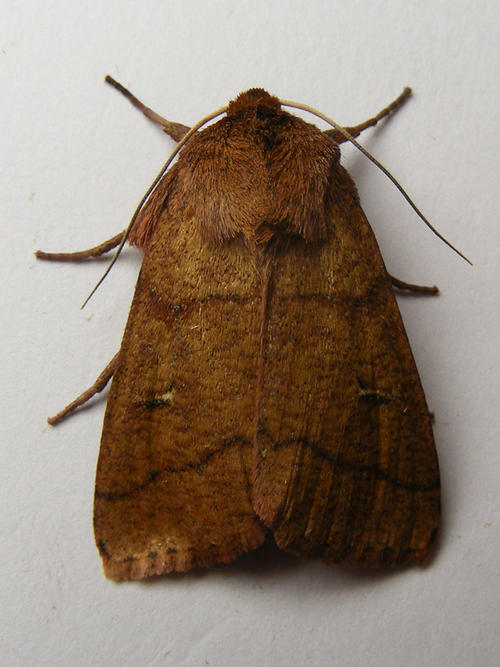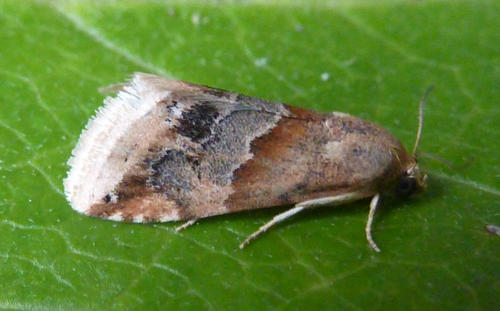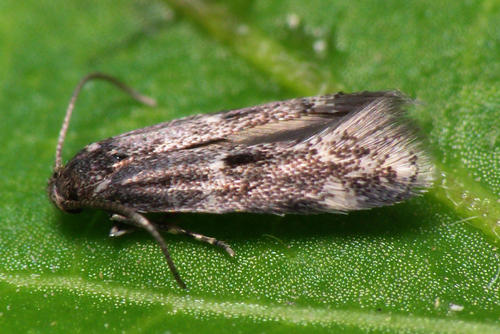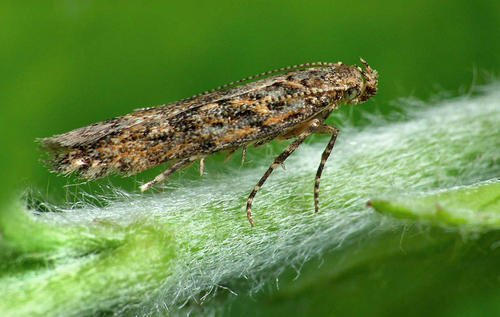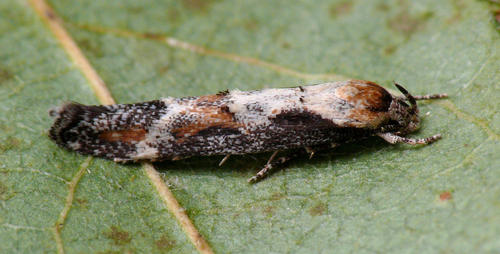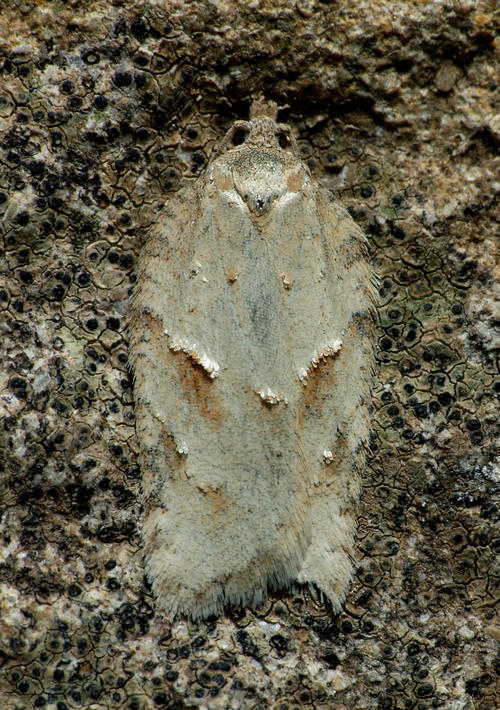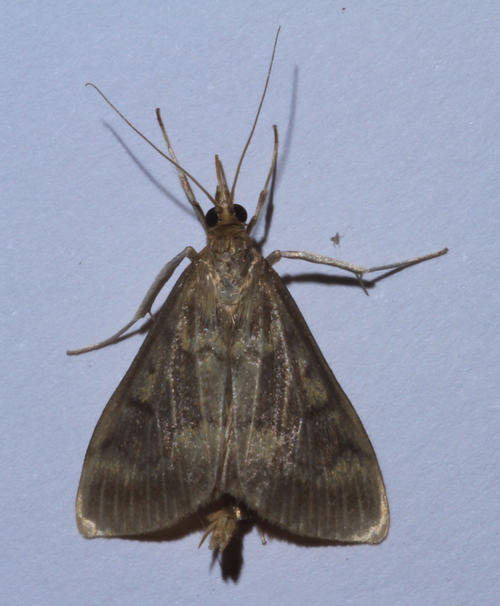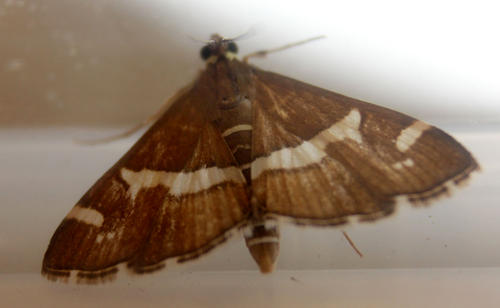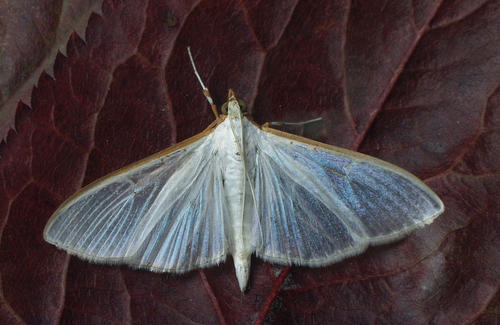New moth species recorded in Worcestershire in 2011
Tony Simpson
(County moth recorder).
2011 was a “bumper year” with 16 new species of moths recorded in Worcestershire (VC37).
There were three new Macro species:
Danny Arnold had a single Double Line Mythimna turca at Upper Rochford on 5/6/11 which might be a new resident or possibly a migrant.
Steve Whitehouse had a Rannoch Looper Itame brunneata of the migrant form at Trench Wood on 14/6/11.
In early July there was an influx of Small Marbled Eublemma parva, a rare migrant which has not been recorded in the county before, with specimens recorded at Abberton by Gavin Peplow, at Bewdley by Ian Machin, and at Stoke Prior by Jeff Rush. Later in October I recorded one at Bransford.
There were thirteen new Micro species:
I found a number of vacated leaf mines of Ectoedemia minimella on Birch in Rock Coppice on 8/10/2011.
I found two larval cases of Coleophora lithargyrinella on Stitchwort Stellaria holostea at Cobb’s Cross on 29/4/2011from which I bred one moth.
Oliver Wadsworth had a Coleophora sternipennella come to light at St. Johns, Worcester: a species which feeds on Atriplex and Chenopodium species.
Oliver also recorded Cosmiotes consortella at Monkwood on 1/4/2011 and at Tiddesley Wood on 16/8/2011.
Patrick Clement caught a specimen of Tuta absoluta at Windmill Hill on 2/7/2011, the first free flying record in the UK of a recently arrived pest species. There had been previous DEFRA records from Tomato greenhouses in the Evesham area in 2010 and it remains a notifiable pest. It has the potential to live on any Solanaceous plant outdoors, such as Woody Nightshade Solanum dulcamara.
Martin Skirrow caught a moth at light on 27/7/11 at Carpenter’s Farm - Pendock later confirmed by me to be Dichomeris alacella, which is a rare species whose larva feeds on lichens on tree trunks, and may have come from nearby orchard trees.
Ian Machin caught a pretty little moth at light in Bewdley on 15/9/11, which Oliver Wadsworth confirmed as Mompha divisella, whose larva makes a stem gall in smaller Willow Herb species.
Mike Dale and Oliver Wadsworth had specimens of Cnephasia communana at Feckenham Wylde Moor come to light on 17/5/2011 and at Windmill Hill on 24/5/2011. This is either an overlooked or more probably a recently arrived species in the county.
When we were light trapping at Monk Wood on 22/4/11 Patrick Clement caught a worn grey Tortrix which was confirmed as Acleris logiana, and Steve Whitehouse had another at Worcester on 24/12/2011. This Birch feeding species used to be confined to Scotland, but there have been an increasing number of records in the south of England, some in Warwickshire in 2010, and now it has reached us. This probably represents a new wave of immigration from the continent unrelated to the Scottish specimens.
Danny Arnold had an unusual Tortrix come to light at Upper Rochford early in the year, on 14/1/11, which on dissection turned out to be Acleris abietana. This is a moth which first appeared in Scotland in 1965. There were some records from the North of England and then one in Herefordshire in 2008. It feeds on conifers especially Abies species and seems now to be spreading southwards in the UK.
The last three species to reach Worcestershire are all migrants to the United Kingdom:
Danny Arnold had our first European Corn Borer Ostrinia nubilalis at Upper Rochford to light on 1/10/11. This species can be a pest species on Maize in hotter climates and is now resident in South East England feeding on Mugwort Artemesia vulgaris.
Gavin Peplow had a Hymenia recurvalis at Abberton at light on 10/10/11. There was a small influx of this Mediterranean species into the UK this autumn.
Lastly Jeff Rush had a beautiful Palpita vitrealis to light at Stoke Prior on 28/10/11.
This large number of new species were recorded in 2011when despite a hot sunny start, summer turned into a generally cold and miserable season in which the commoner migrant and resident species were in low numbers. This good result reflects the generally increased number of recorders with light traps and the fact that we now have five proficient micromoth recorders in the county. It will be difficult to match these records unless we get another major migration year in 2012.
Images
Fig. 1. Double Line Mythimna turca .Danny Arnold.
Fig, 2. Small marbled moth Eublemma parva. Tony Simpson.
Fig. 3. Cosmiotes consortella. Oliver Wadsworth
Fig. 4. Tuta absoluta. Patrick Clement.
Fig. 5. Mompha divisella. Oliver Wadsworth.
Fig. 6. Acleris logiana. Oliver Wadsworth.
Fig. 7. European Corn Borer Ostrinia nubilalis. Danny Arnold.
Fig. 8. Hymenia recurvalis. Gavin Peplow.
Fig. 9. Palpita vitrealis. Oliver Wadsworth
